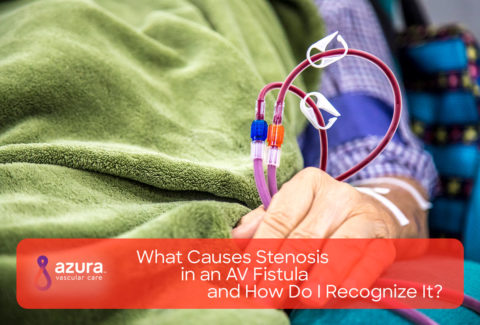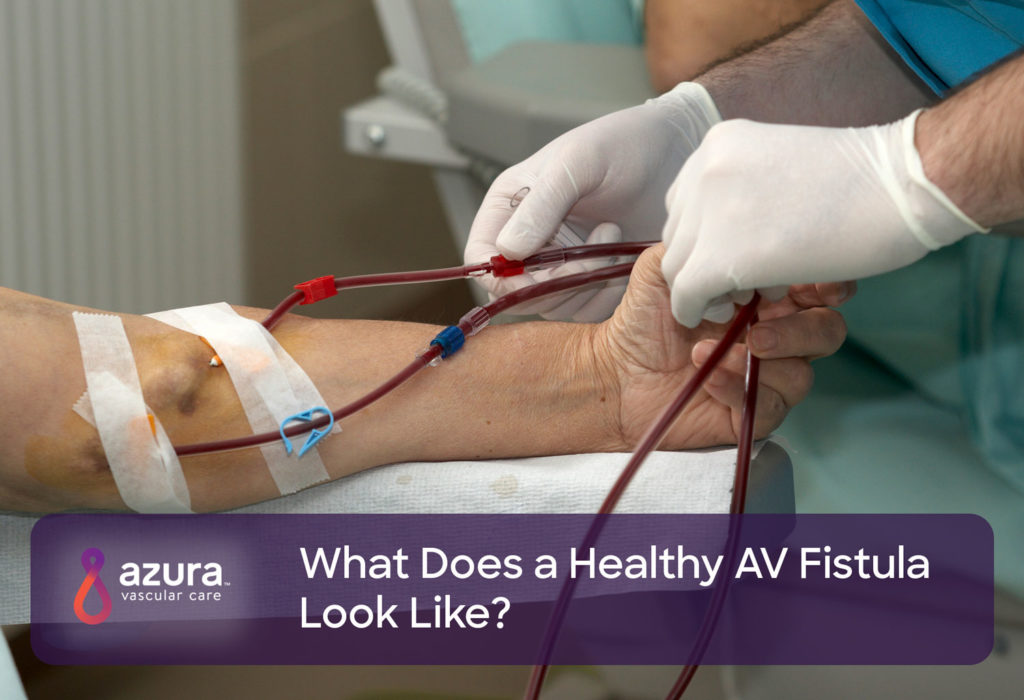
How do you know if your arteriovenous (AV) fistula is considered healthy? You often can’t tell just by looking. A healthy AV fistula looks different from person to person. What your fistula looks like and how long it takes to mature, will depend a lot on your body’s ability to heal.
Before we discuss what a healthy fistula looks like, it’s important for you to understand what an AV fistula is and how it matures.
What Is an AV Fistula?
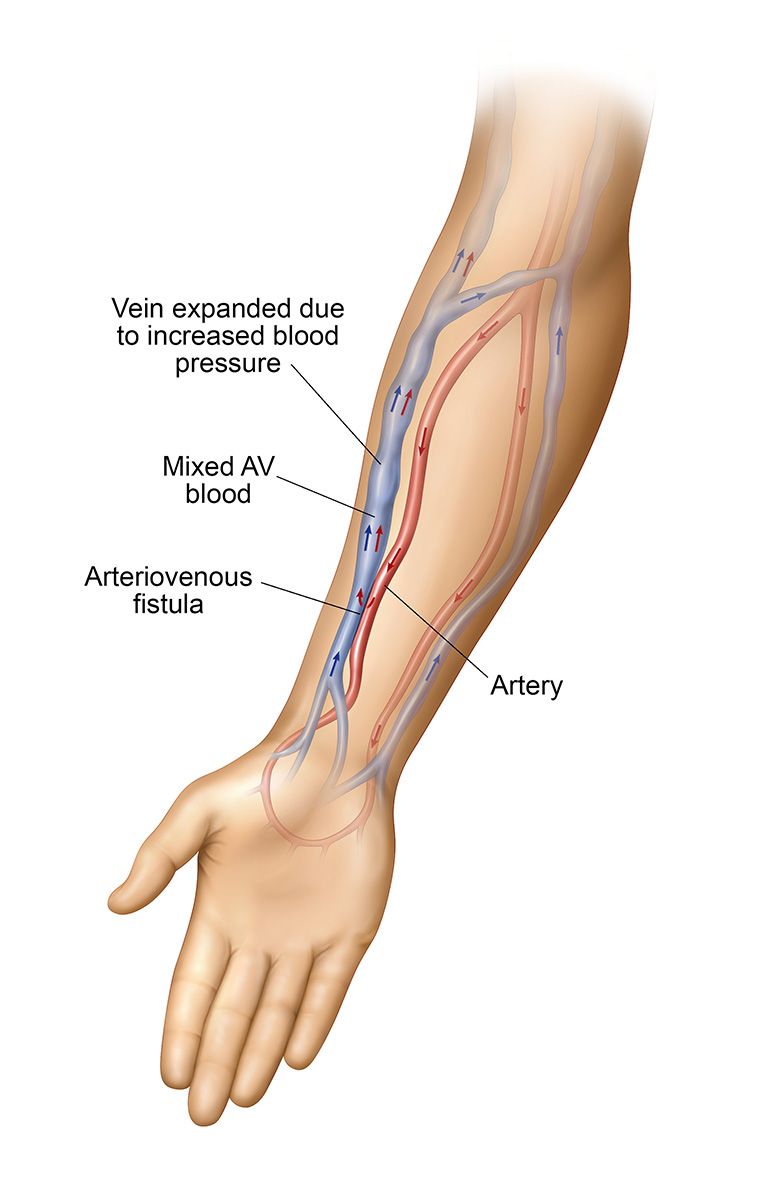 An AV fistula is the preferred hemodialysis access option because it has the fewest associated complications, such as infection and clot formation, and typically lasts longer than other dialysis access options, if well-cared for.
An AV fistula is the preferred hemodialysis access option because it has the fewest associated complications, such as infection and clot formation, and typically lasts longer than other dialysis access options, if well-cared for.
An AV fistula is a surgically-created permanent access located under the skin, making a direct connection between a vein and an artery. An AV fistula is typically created in the non-dominant arm. If the veins in your arm are not large or healthy enough to support a fistula, it may be created in your leg. The surgical procedure to create a fistula can be performed on an outpatient basis.
Considered the “gold standard” of dialysis accesses, AV fistulas are generally the best long-term option for dialysis access.
How Long Will It Take for My AV Fistula to Heal and Mature?
It is important for your fistula to completely heal and mature (develop or enlarge) so it is ready to use when dialysis treatment begins. Depending on the person, it can take several weeks to several months for an AV fistula to heal and mature. In the United States, the time from AV fistula creation until first use averages 133 days, or approximately 4 months.1 As it heals and matures, the appearance of your fistula will probably change.
After the fistula creation procedure, you may notice some swelling and bruising near your access site. Some minor bleeding is normal after surgical creation of a fistula and can last for several days.
My Fistula Is Growing – Should I Be Concerned?
After fistula creation, you may notice a bulge in your arm. This is the enlarged vein that results from blood flowing from the high pressure/ high flow artery into the low pressure/low flow vein. You may notice ink on your arm after your fistula creation procedure that were placed by your physician. These ink marks line the outside margin of your fistula right after it was created and are guides used to determine how well your fistula is maturing.
Over time, your fistula should get larger, extending past the lines drawn on your arm when your access was created. This allows more blood to flow through the fistula and into the vein in order to provide a high enough blood flow rate during your hemodialysis treatments.
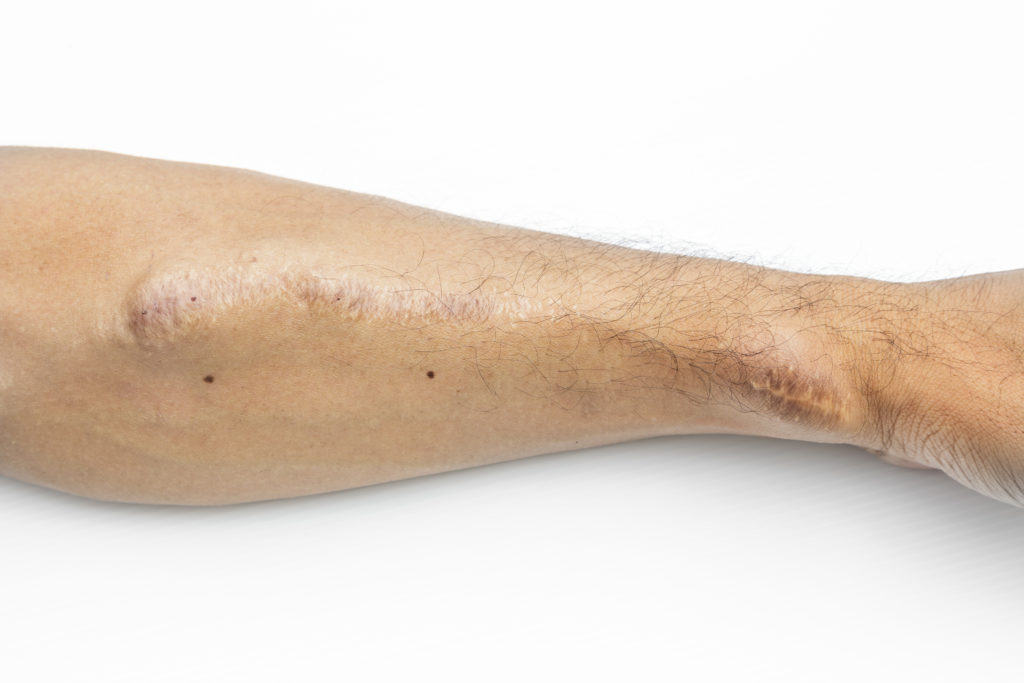
Your fistula should also become stronger as time progresses. At first, your fistula will feel soft and pliable and at this point, it’s still somewhat fragile. With time, however, the increased blood flow through the fistula will help strengthen it. As your fistula becomes stronger, it will feel different. Instead of being soft and pliable, it may become firm and springy.
Should I Worry If My AV Fistula Is Red or My Hand is Numb?
In the early days following AV fistula creation, as your fistula heals, you may notice some redness near the site. You should report it to your doctor since it may be an indication of infection.
Temporary numbness of the hand of your fistula arm following the AV fistula procedure is normal. However, if numbness persists, talk to your doctor or dialysis team.
As your fistula matures you may develop accessory veins off the main vein of your fistula. If these accessory veins are numerous, and they become too large they can reduce the pressure and blood flow rate through the fistula, delaying maturation.
My Thrill Keeps Getting Stronger
Right after fistula creation, if you feel your fistula, you should notice a vibration coming from your access site. This vibration is called a thrill. Over the next week, the thrill should get stronger. This is normal and means your access is healing and maturing as it should.
Remember that over time, as your AV fistula gets more use, it will change. The appearance will change, and the feel of it will change. While it’s important to notice these changes, it’s also important for you to keep in mind that much of this change is normal.
From Healthy to Abnormal
Now that you know what a normal AV fistula looks and feels like, let’s look at an abnormal fistula.
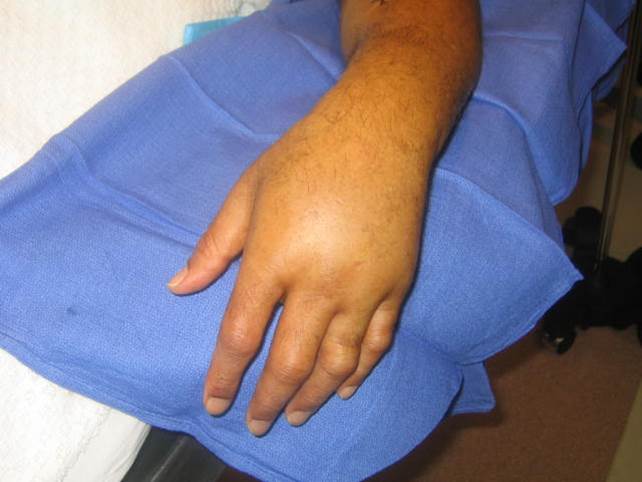
A potential complication with an AV fistula is an infection. If you suspect an infection, you need to get medical attention immediately. Signs of an infection include:
- Drainage from your access site
- Swelling of your arm, hand or area surrounding your access site
- Redness that begins near your access site and spreads outward
- Warmth in your arm, hand or area surrounding your access site
- Fever
Remember, not all signs noted above need to be present for an infection to exist.
Other potential noninfectious complications associated with an AV fistula include:
- Aneurysm
- Blood clots
- Stenosis
- Steal Syndrome
Read our guide about the 9 signs of a dysfunctional dialysis access to learn more.
An aneurysm is a weakness in the wall of your AV fistula which results in an excessive localized enlargement, possibly a bulge. An aneurysm may continue to expand and if left untreated, may eventually burst. An aneurysm should be evaluated and treated if necessary to provide stability to the fistula and prevent further progression.
When blood does not flow smoothly through your AV fistula, it can result in the formation of a blood clot. When blood clots in a fistula prevent dialysis from being performed, a minimally invasive procedure may be needed to clear the clot from your AV fistula.
The narrowing of a blood vessel is called stenosis and is a common cause of AV fistula dysfunction. Stenosis in any vein or artery can create changes in blood flow and pressure throughout the dialysis access and if significant enough, it may completely block off blood flow through your fistula.
If your arm or hand feels cold or is turning blue, you may have a problem called “steal syndrome.” Steal syndrome is when an AV fistula diverts arterial blood flow from the hand of the fistula arm into the vein used for fistula creation. This results in ischemia (inadequate blood flow) to the hand.
To be sure your access is not blocked and remains functioning properly, you should feel for the thrill daily and listen for the whooshing sound of blood moving through your fistula. This whooshing sound is called a bruit. Signs that your access might be blocked may include a weaker, inconsistent or absent thrill or bruit.
It’s important to become familiar with your AV fistula so that you notice changes as soon as possible and proper action may be taken promptly. In addition to following your dialysis care team’s advice, educate yourself so that you may understand and take ownership of the health of your AV fistula. It’s helpful for everyone to partner with their care team and learn how to participate in your own health care.
Sources:
1 United States Renal Data System. 2016 USRDS annual data report: Epidemiology of kidney disease in the United States. National Institutes of Health, National Institute of Diabetes and Digestive and Kidney Diseases, Bethesda, MD, 2016.


